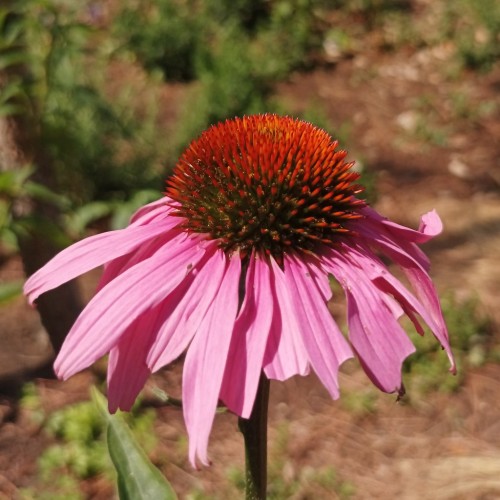
purple coneflower
Echinacea purpurea
Also Known As - echinacea,purple coneflower,purple coneflowerCycle:
Herbaceous Perennial
Watering:
Minimum
Hardiness Zone:
3 - 8
Flowers:
Flowers In Summer
Sun:
Full sun
Soil:
Sandy Loamy Clay Rocky
Fruits:
Fruits In Autumn Ready In Fall
Leaf:
Yes
Growth Rate:
Moderate
Maintenance:
Low
Drought Tolerant:
Yes
Care Level:
Medium
watering
For best results, water purple coneflower (Echinacea purpurea) deeply and infrequently. Wait until the top 6 inches of soil are dry before watering the plant. Aim to water the plant 1-2 times per week, thoroughly saturating the soil to a depth of 10-12 inches. This deep watering will encourage deep root growth and make the plant more drought-resistant. During periods of extreme heat, water more frequently to prevent dry soil and wilting.
sunlight
The purple coneflower (Echinacea purpurea) should be grown in full sun, which includes at least 6 hours of direct sun exposure. The length of daylight for the plant also matters, as it needs 14 to 18 hours of daylight. When the plant begins to bloom, it is important to move it to an area with 12 to 14 hours of sunlight. This will ensure that the flowers remain in bloom until late summer. To keep the plant healthy and vibrant, it should also be moved to a spot with shade for 1 to 2 hours during the hottest part of the day.
pruning
When it comes to pruning a purple coneflower it's best to deadhead each plant at least once or twice a season. Deadheading simply means removing the dead flower heads with pruning shears. This helps to prevent the plant from going to seed but it also encourages further blooming. It's best to wait until the flowers have completely faded before deadheading; this will ensure that you remove only the ones that have finished blooming. If some flowers remain on the plant, you can lightly prune the stems to encourage more blooms throughout the season. If you want to cut the entire plant down to the ground, it's best to do so in the late fall, after the growing season has ended. Coneflowers are typically cut back around 18 inches (46 cm) high in the fall. This helps to keep the plants neat and encourages new growth in the spring.
